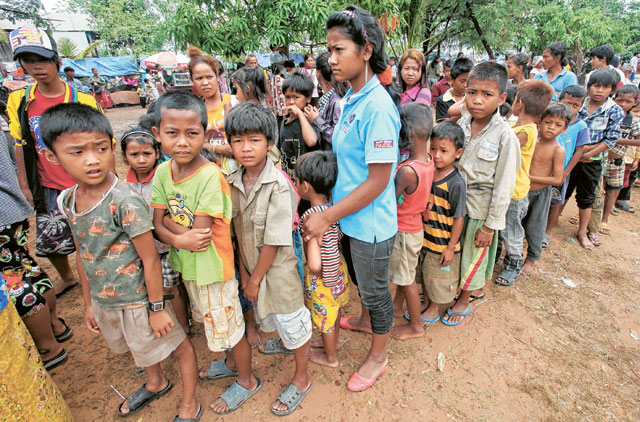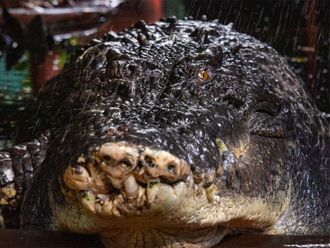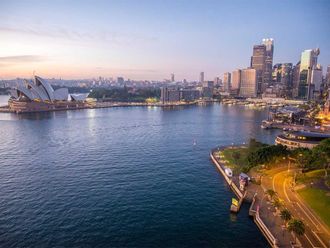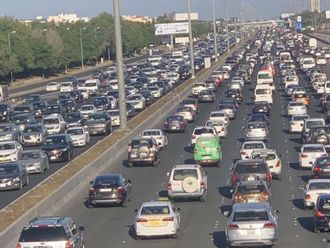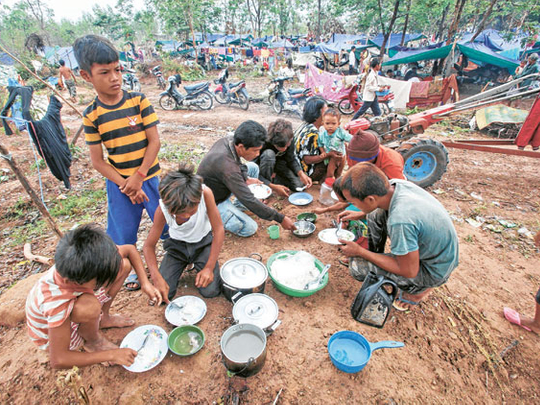
Surin, Thailand: Thai and Cambodian troops exchanged fire early Friday, breaking a ceasefire agreed the day before to end a week of border clashes that have killed 16 people and wounded scores in Southeast Asia's deadliest border dispute in years.
Each side blamed the other for firing first, but both said they still wanted to give the truce a chance.
Brief clashes with guns and small hand grenades broke out twice overnight, Thai regional army commander Thawatchai Samutsakorn said. The clash killed one Thai soldier and wounded four others. It was not clear if there were casualties on the Cambodian side.
Nationalist passions
The ceasefire was supposed to end a week of sporadic artillery and small-rocket fire that fanned nationalist passions in both countries, threatened to overshadow elections in Thailand and reinforced doubts over Southeast Asia's ambitions to form a European Union-style community by 2015.
The guns have been silent since 3am but tension remained high with troops still stationed in close proximity around two ancient temples in the poorly demarcated Dongrak Mountain Range.
Thailand blamed the latest skirmish on a misunderstanding on the ground in Cambodia.
"On the Thai side, we understand the ceasefire agreement but Cambodia may still have problems," Deputy Prime Minister Suthep Thaugsuban told reporters. "But we will give it a chance and look at the situation positively — their communications may have problems and the chain of command may be ineffective."
Agreement
Cambodia's field commander Colonel Suos Sothea denied Cambodian troops had fired first.
The Cambodian defence ministry said in a statement it was "regretful" that Thai troops had attacked and said the Cambodian army still respected the ceasefire agreement.
On Thursday, the two sides had agreed to keep troops in the area but hold regular meetings between field commanders and leave their long-festering territorial disputes to a joint demarcation commission.They also agreed to open border checkpoints near two disputed 12th-century Hindu temples at the heart of the fighting, although it was unclear when villagers would be allowed back permanently to their remote, ravaged towns. More than 60,000 were evacuated during the fighting.
The two sides remained at odds over who controlled the Ta Moan and Ta Krabey temples after fighting that killed at least eight Cambodians and eight Thais.
"We will have to be vigilant in the next few days to make sure everyone on the ground understands the agreement," said Thai Regional Commander Thawatchai Samutsakorn.
Stone-walled ruins
Thailand insists the stone-walled ruins reside in its Surin province according to a 1947 map. Cambodia says they are in its Oddar Meanchey province.
Sovereignty over three border temples — Ta Moan and Ta Krabey plus Preah Vihear — and the jungle surrounding them has been in dispute since the withdrawal of the French from Cambodia in the 1950s.
Analysts have expressed scepticism the conflict — which flared up in February near Preah Vihear, when 11 people died — is really about sovereignty and say it appears politically driven on both sides.
Villagers wary
Some say hawkish generals in Thailand are colluding with nationalists to foment a crisis that could force the cancellation of elections there, expected by July, and sideline the powerful opposition to preserve the royalist establishment's hold on power.
In Hua Ang border village, dozens of civilians returned warily to check on their houses and farmland.
"This ceasefire seems a bit fishy. Look what happened last night," said Pailin Naralit, a 49-year-old deputy village chief as he walked through his damaged rubber plantation. "I am checking on my house and going back to the shelter soon. I don't think it's safe here yet."


